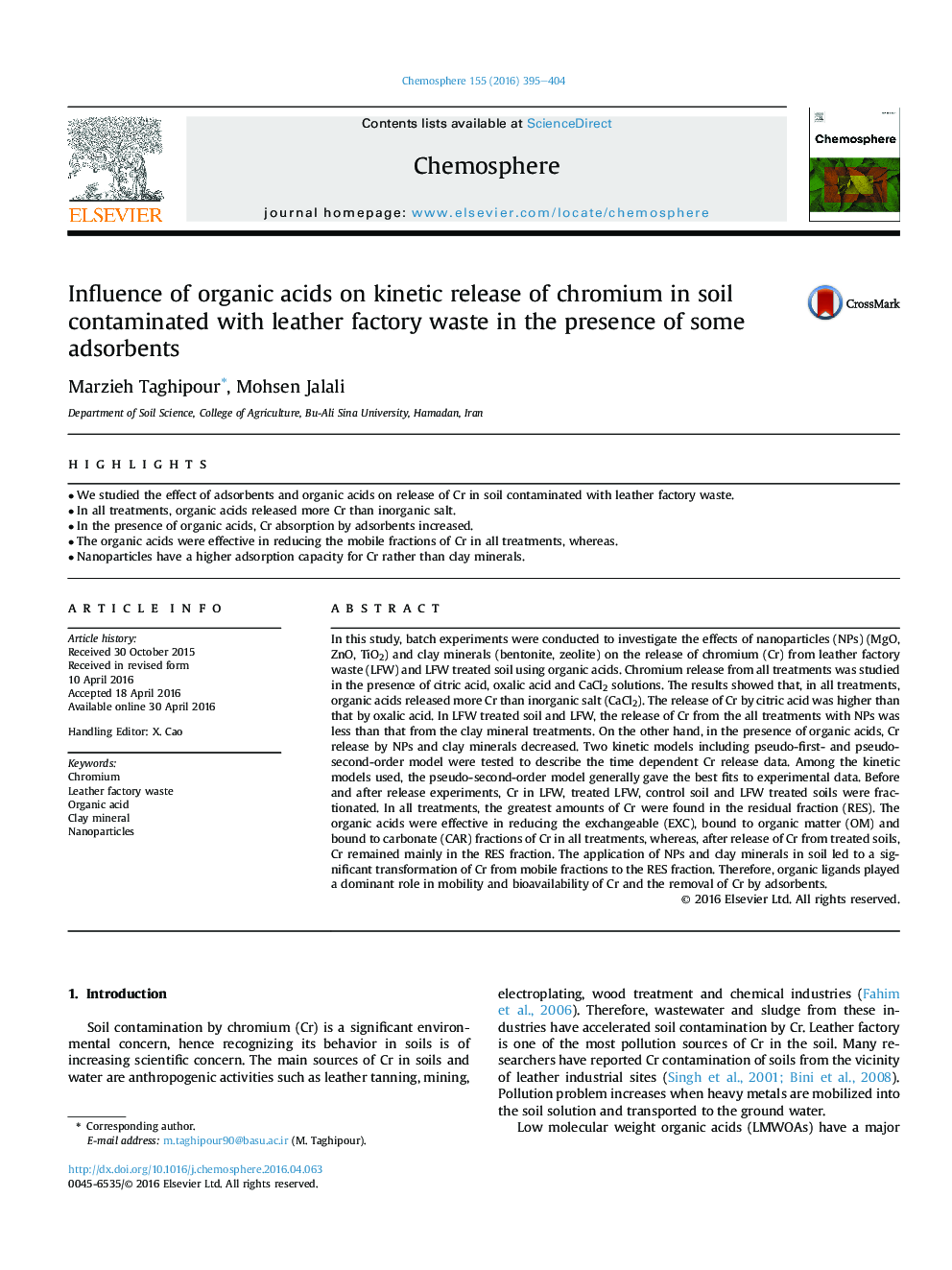| کد مقاله | کد نشریه | سال انتشار | مقاله انگلیسی | نسخه تمام متن |
|---|---|---|---|---|
| 4407526 | 1618816 | 2016 | 10 صفحه PDF | دانلود رایگان |
• We studied the effect of adsorbents and organic acids on release of Cr in soil contaminated with leather factory waste.
• In all treatments, organic acids released more Cr than inorganic salt.
• In the presence of organic acids, Cr absorption by adsorbents increased.
• The organic acids were effective in reducing the mobile fractions of Cr in all treatments, whereas.
• Nanoparticles have a higher adsorption capacity for Cr rather than clay minerals.
In this study, batch experiments were conducted to investigate the effects of nanoparticles (NPs) (MgO, ZnO, TiO2) and clay minerals (bentonite, zeolite) on the release of chromium (Cr) from leather factory waste (LFW) and LFW treated soil using organic acids. Chromium release from all treatments was studied in the presence of citric acid, oxalic acid and CaCl2 solutions. The results showed that, in all treatments, organic acids released more Cr than inorganic salt (CaCl2). The release of Cr by citric acid was higher than that by oxalic acid. In LFW treated soil and LFW, the release of Cr from the all treatments with NPs was less than that from the clay mineral treatments. On the other hand, in the presence of organic acids, Cr release by NPs and clay minerals decreased. Two kinetic models including pseudo-first- and pseudo-second-order model were tested to describe the time dependent Cr release data. Among the kinetic models used, the pseudo-second-order model generally gave the best fits to experimental data. Before and after release experiments, Cr in LFW, treated LFW, control soil and LFW treated soils were fractionated. In all treatments, the greatest amounts of Cr were found in the residual fraction (RES). The organic acids were effective in reducing the exchangeable (EXC), bound to organic matter (OM) and bound to carbonate (CAR) fractions of Cr in all treatments, whereas, after release of Cr from treated soils, Cr remained mainly in the RES fraction. The application of NPs and clay minerals in soil led to a significant transformation of Cr from mobile fractions to the RES fraction. Therefore, organic ligands played a dominant role in mobility and bioavailability of Cr and the removal of Cr by adsorbents.
Journal: Chemosphere - Volume 155, July 2016, Pages 395–404
